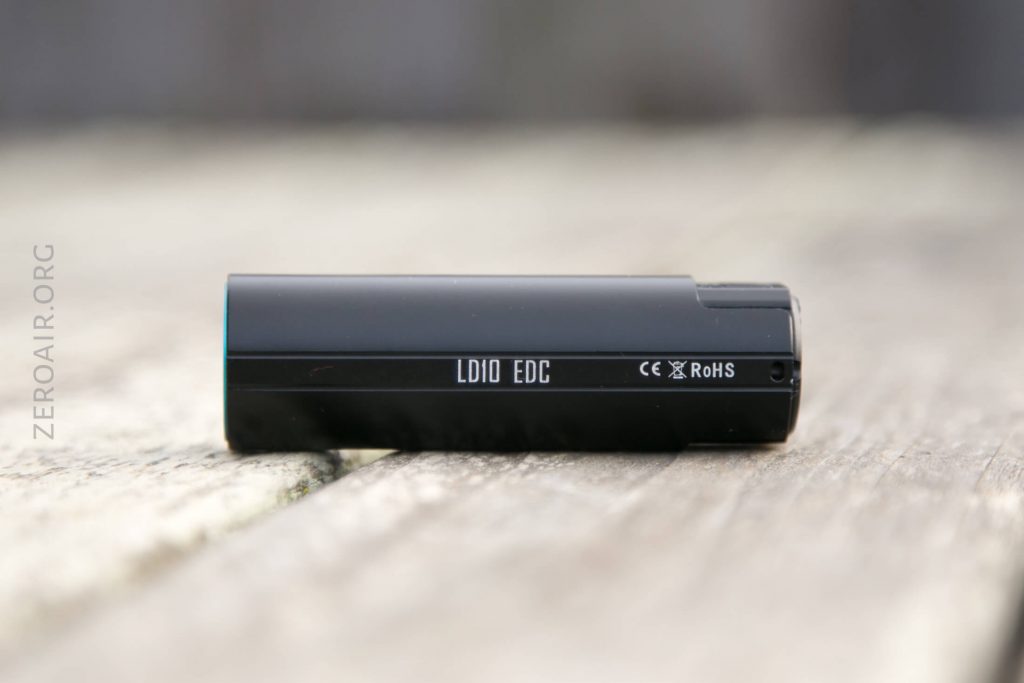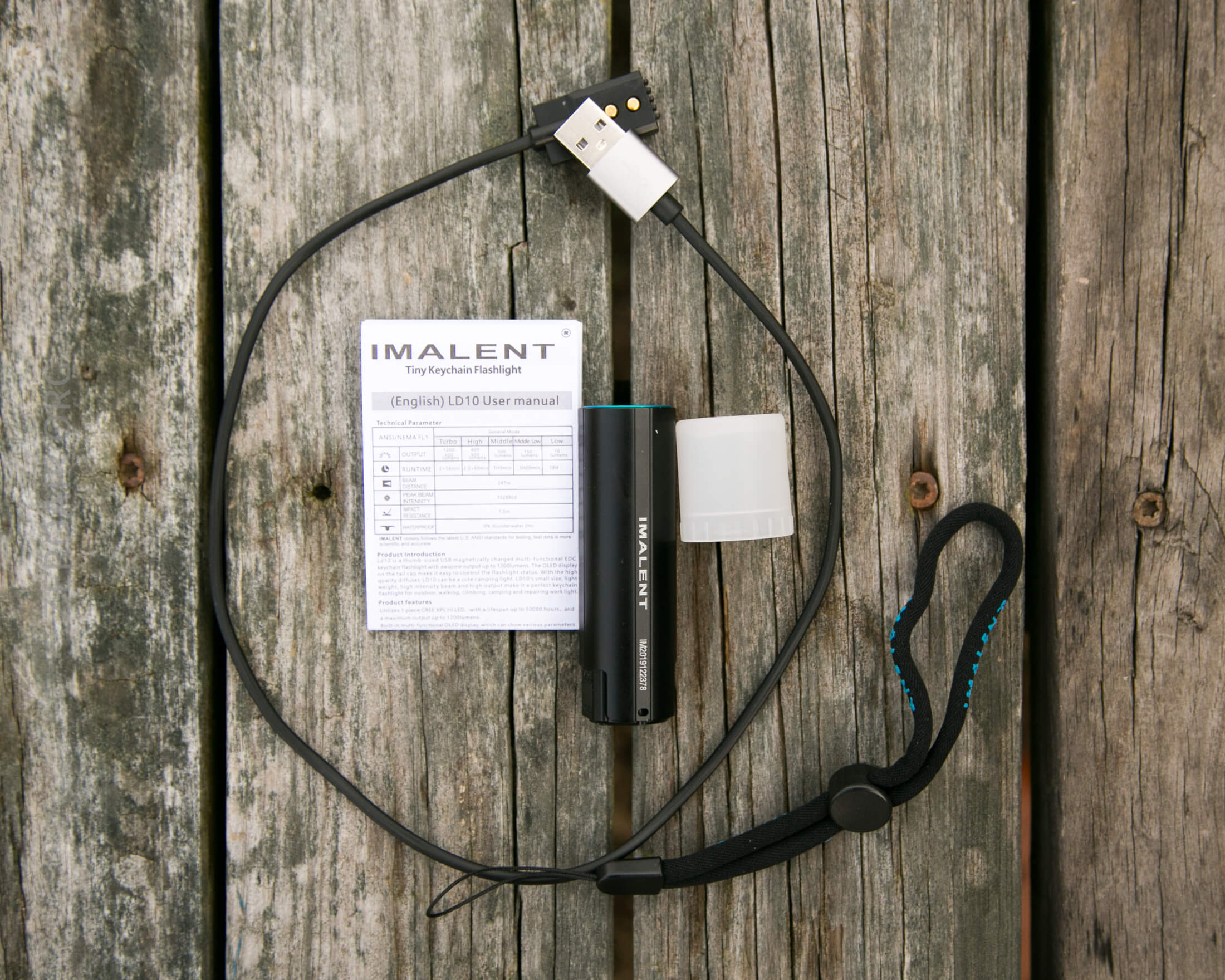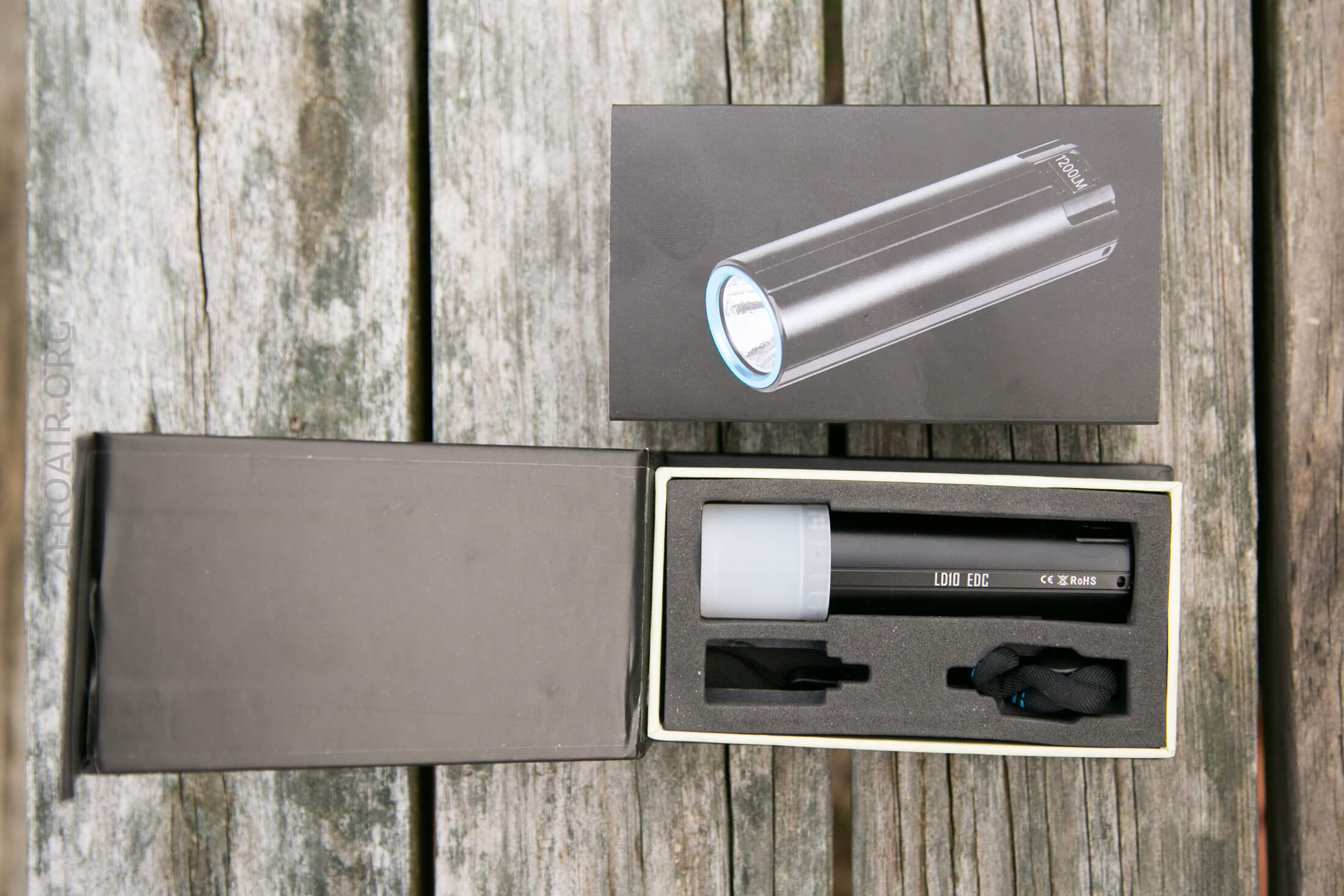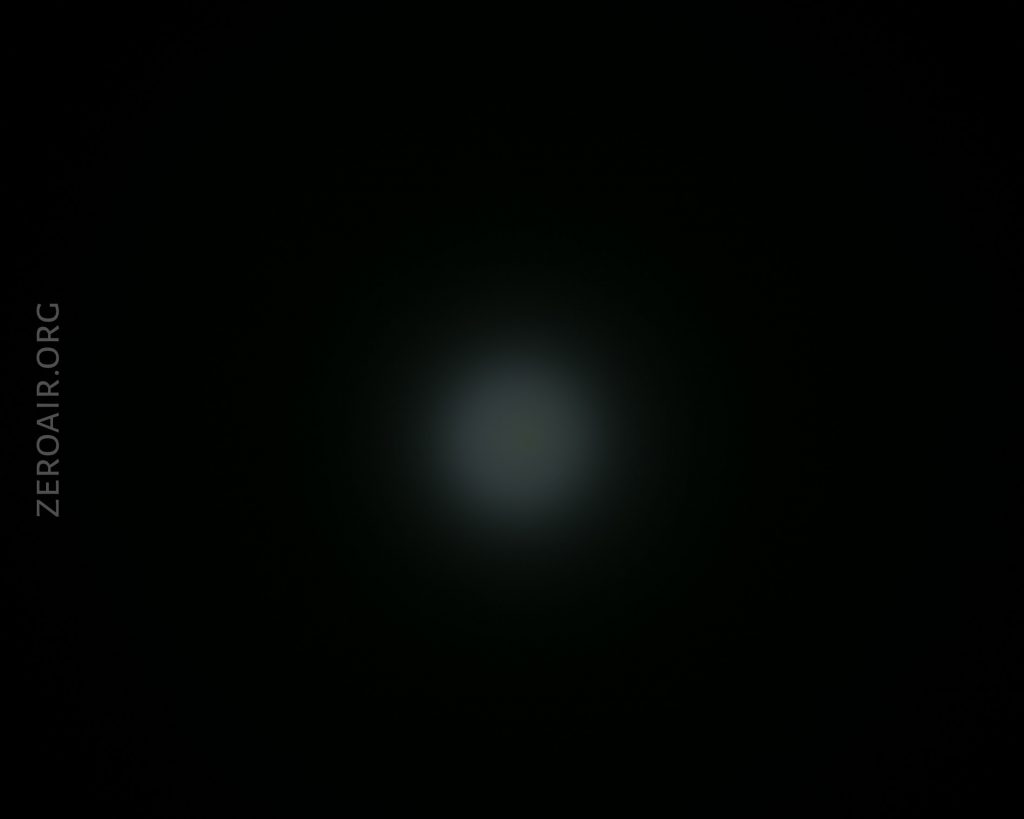Imalent LD10 Flashlight Review
Imalent sent me this new LD10 flashlight, which has one of my favorite emitters (Cree XP-L HI). It’s a neat little light! Read on!
Official Specs and Features
Here’s a link to the Imalent LD10 Flashlight product page.
Versions
Just the one version.
Price
Looks like this one’s going for $29.95 right now. Buy yours at imalentstore.com!
Short Review
This light reminds me entirely of the RovyVon A23 series light, which I’m extremely fond of. So I’m already off on the right foot with it. It has a nice reflector, my favorite (ish) emitter, and is very pocketable. The switch is hard for me to actuate, it has a built-in battery, and the charge connection is proprietary, though, so there are some negatives too. All in all, a neat little light.
Long Review
The Big Table
| Imalent LD10 Flashlight | |
|---|---|
| Emitter: | Cree XP-L HI |
| Price in USD at publication time: | $29.95 Buy yours at imalentstore.com! |
| Cell: | Internal |
| Turbo Runtime | High Runtime |
| LVP? | Yes |
| Switch Type: | E-Switch |
| Quiescent Current (A): | ? |
| On-Board Charging? | Yes |
| Chargetime | |
| Power off Charge Port with no Cell? | ? |
| Claimed Lumens (lm) | 1200 |
| Measured Lumens (at 30s) | 719 (59.9% of claim)^ |
| Candela per Lumen | 13.04 |
| Claimed Throw (m) | 247 |
| Candela (Calculated) in cd (at 30s) | 345lux @ 5.403m = 10071cd |
| Throw (Calculated) (m) | 200.7 (81.3% of claim)^ |
| All my Imalent reviews! | |
^ Measurement disclaimer: Testing flashlights is my hobby. I use hobbyist-level equipment for testing, including some I made myself. Try not to get buried in the details of manufacturer specifications versus measurements recorded here; A certain amount of difference (say, 10 or 15%) is perfectly reasonable.
What’s Included
- Imalent LD10 Flashlight
- Charge cable (USB to proprietary magnetic)
- Lanyard
- Rigid diffuser
- Manual
Package and Manual
Build Quality and Disassembly
Hard to describe the build quality here. The light is small and near-featureless on the external, so it just feels like a little bar. But it’s weighty enough to feel sturdy.
All in all I’ll say it’s well built. Nothing inside rattles or gives any concern of being poorly built.
The switch doesn’t protrude much at all, so there’s nothing to snag on.
These contact points for the magnetic charging on the tail end are always exposed.
Also note that this body has no knurling whatsoever. This could be a blessing or a curse. It does make the light extremely pocket friendly, though.
I didn’t manage to disassemble it at all. I have a feeling that the tail area is screwed into the body, or possibly press-fit in, but I couldn’t budget it.
Size and Comps
Officially 77mm x 22.5mm, and 58g total. That of course includes the cell weight; the cell is built-in and not removable or replaceable.
Like I said, it reminds me of the Aurora A23 – the size is very similar, and they have a similar feature set.
Retention and Carry
The only way intended for carry of this light is by attaching the included lanyard. This lanyard attaches on the tail end of the light, through a hole in the body.
There is no pocket clip. There is no magnet^. There is no pouch. I tended to just carry this light loose in my pocket; it’s small enough, and rides well.
^ There is a magnet of course, which is used for attaching the charging cable. And this magnet is strong enough to hold the light in certain orientations in certain situations. But it is for charging, and I wouldn’t say it’s reliable for retention of the light (despite what the product photos show).
Power and Runtime
The power source isn’t stated (as far as I saw) but the LD10 is almost certainly powered by a single 18350 cell of some type (it could also be a lipo like in the A23, but I doubt it). This cell is not replaceable, and no mention is made by Imalent of a service for cell swaps on warranty. Of course the light does include the ability to charge the cell, but once the cell degrades, the light is done.
Here’s a runtime on Turbo. The light does start at around 1200 lumens but steps down to around 700 lumens within 15-20 seconds to the point of the FL-1 reading of 719 lumens. There it begins to slowly drift downward until shutting off cleanly at 3.04V – the OLED display indicates the cell voltage.
High looks just the same, minus the 1150-700 stepdown seen for Turbo. This mode is claimed as 800 lumens and nearly meets that at 30s.
The OLED display on the side of the light displays the output mode (ie “1200” or “800” etc) and also cycles to the cell voltage. This is a nice feature. The OLED display is quite dim.
Charging
As mentioned, the LD10 has built-in charging, too. This is by way of a magnetic connection on the tail of the light.
The charge cable is proprietary, and I found it very frustrating to use. It’s nice in one sense because it allows for very good weather-sealing on the light.
But I found it very cumbersome to actually get connected right. I had to be very specific when connecting to actually get a clean connection. When charging, the OLED display shows four bars as a battery level. When charging is complete, the OLED shuts off.
Here’s a charge graph. Charging looks great, takes just over an hour, and shows that the cell is just over 1000mAh.
Modes and Currents
| Mode | Mode Claimed Output (lm) | Claimed Runtime | Measured Lumens | Tailcap Amps |
|---|---|---|---|---|
| Turbo | 1200/500 | 2m/56m | 719 | – |
| High | 800/500 | 2.5m/60m | 711 | – |
| Middle | 500 | 1h9m | 432 | – |
| Middle Low | 150 | 3h20m | 167 | – |
| Low | 10 | 180h | 13 | – |
Pulse Width Modulation
Unfortunately all the low modes have PWM. Fortunately, it’s fairly fast, and only noticeable on Low.
For reference, here’s a baseline shot, with all the room lights off and almost nothing hitting the sensor. Also, here’s the light with the worst PWM I could find. I’m adding multiple timescales, so it’ll be easier to compare to the test light. Unfortunately, the PWM on this light is so bad that it doesn’t even work with my normal scale, which is 50 microseconds (50us). 10ms. 5ms. 2ms. 1ms. 0.5ms. 0.2ms. In a display faster than 0.2ms or so, the on/off cycle is more than one screen, so it’d just (very incorrectly) look like a flat line. I wrote more about this Ultrafire WF-602C flashlight and explained a little about PWM too.
User Interface and Operation
The switch is a tail-e-switch, labeled “MODE” and with a bit of texture for easier finding and grip. I found it to be quite hard to actuate, and with no grippy on the light at all, I had to hold the light very specifically to get the button moving. It’s a very low travel clicky e-switch.
Here’s a UI table!
| State | Action | Result |
|---|---|---|
| Off | Click | On (Mode Memory, excluding Turbo/Strobe) |
| On | Hold | Mode Advance (L-ML-M-H) |
| Any | Double Click | Turbo |
| Turbo | Double Click | Strobe |
| On | Click | Off |
| Off | Click 4x | Lockout |
| Lockout | Click 4x | Unlock |
| Off | Hold | No action |
And that seems to be it for the UI. There is no shortcut whatsoever to Low – for example holding from off doesn’t give Low, it gives nothing (surprising!). So there are some (many) instances where to get low (which isn’t really even that low!), you’ll need to go all the way through the 800 lumen output. At least Turbo isn’t in the main rotation, I suppose.
LED and Beam
The emitter of choice here is a Cree XP-L HI. This seems to be a coolish temperature version, but the temperature is not stated. The reflector is quite deep, has a light orange peel texture, and again is a reflector, not a TIR as is used in something like the A23.
The diffuser is quite useful for diffusing. It’s not a glow diffuser, and is not flexible. But it fits the light extremely well.
These beamshots are always with the following settings: f8, ISO100, 0.3s shutter, and manual 5000K exposure.
Tint vs BLF-348 (KillzoneFlashlights.com 219b version) (affiliate link)
I compare everything to the Killzone 219b BLF-348 because it’s inexpensive and has the best tint!
Conclusion
What I like
- Easy to pocket
- Deep reflector makes for a surprisingly throwy light
- Uses Cree XP-L HI (again, positively influencing throw)
- The OLED is a neat touch
What I don’t like
- Built-in, non-replaceable battery
- Proprietary (and difficult to use) magnetic charge connection
- OLED is probably underutilized
- No shortcut to Low
Notes
- This light was provided by Imalent for review. I was not paid to write this review.
- This content originally appeared at zeroair.org. Please visit there for the best experience!
- For flashlight-related patches, stickers, and gear, head over to PhotonPhreaks.com!
- Use my amazon.com referral link if you’re willing to help support making more reviews like this one!
- Please support me on Patreon! I deeply appreciate your support!




























































Pingback: Imalent DM21C Flashlight Review – ZeroAir Reviews
Pingback: Imalent LD70 Flashlight Review – ZeroAir Reviews